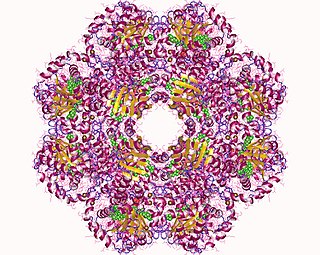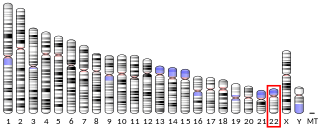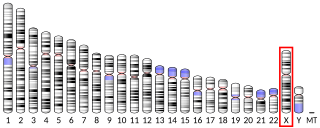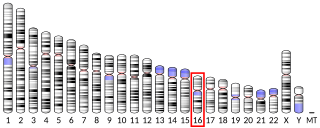
INT-2 proto-oncogene protein also known as FGF-3 is a protein that in humans is encoded by the FGF3 gene.

Fibroblast growth factor 23 (FGF23) is a protein and member of the fibroblast growth factor (FGF) family which participates in the regulation of phosphate in plasma and vitamin D metabolism. In humans it is encoded by the FGF23 gene. FGF23 decreases reabsorption of phosphate in the kidney. Mutations in FGF23 can lead to its increased activity, resulting in autosomal dominant hypophosphatemic rickets.

Fibroblast growth factor receptor 2 (FGFR2) also known as CD332 is a protein that in humans is encoded by the FGFR2 gene residing on chromosome 10. FGFR2 is a receptor for fibroblast growth factor.

Tyrosyl-DNA phosphodiesterase 1 is an enzyme that in humans is encoded by the TDP1 gene.

Fibroblast growth factor 5 is a protein that in humans is encoded by the FGF5 gene.

Elongation of very long chain fatty acids protein 4 is a protein that in humans is encoded by the ELOVL4 gene.

Alpha-tocopherol transfer protein (α-TTP) is a protein that in humans is encoded by the TTPA gene.

Fibroblast growth factor 18 is a protein that in humans is encoded by the FGF18 gene.

Ataxin-10 is a protein that in humans is encoded by the ATXN10 gene.

Fibroblast growth factor-binding protein 1 is a protein that in humans is encoded by the FGFBP1 gene.

Fibroblast growth factor receptor-like 1 is a protein that in humans is encoded by the FGFRL1 gene.

Fibroblast growth factor 13 is a protein that in humans is encoded by the FGF13 gene.

Fibroblast growth factor 6 is a protein that in humans is encoded by the FGF6 gene.

Fibroblast growth factor 12 is a protein that in humans is encoded by the FGF12 gene.

Puratrophin-1 is a protein that in humans is encoded by the PLEKHG4 gene.

Fibroblast growth factor 17 is a protein that in humans is encoded by the FGF17 gene.

Potassium voltage-gated channel, Shaw-related subfamily, member 3 also known as KCNC3 or Kv3.3 is a protein that in humans is encoded by the KCNC3.
Fibroblast growth factor 11 also known as FGF11 is a human gene.

Cereblon is a protein that in humans is encoded by the CRBN gene. The gene that encodes the cereblon protein is found on the human chromosome 3, on the short arm at position p26.3 from base pair 3,190,676 to base pair 3,221,394. CRBN orthologs are highly conserved from plants to humans.

Autosomal dominant cerebellar ataxia (ADCA) is a form of spinocerebellar ataxia inherited in an autosomal dominant manner. ADCA is a genetically inherited condition that causes deterioration of the nervous system leading to disorder and a decrease or loss of function to regions of the body.




















